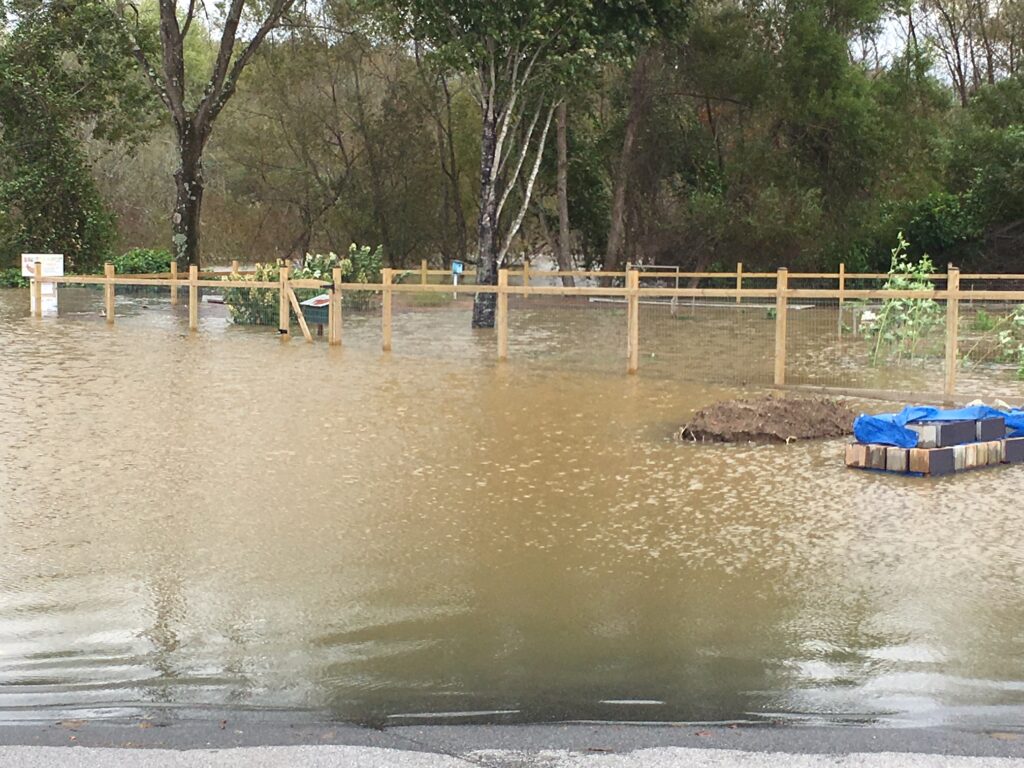Soil Contamination Concerns Post Flooding
go.ncsu.edu/readext?1050427
en Español / em Português
El inglés es el idioma de control de esta página. En la medida en que haya algún conflicto entre la traducción al inglés y la traducción, el inglés prevalece.
Al hacer clic en el enlace de traducción se activa un servicio de traducción gratuito para convertir la página al español. Al igual que con cualquier traducción por Internet, la conversión no es sensible al contexto y puede que no traduzca el texto en su significado original. NC State Extension no garantiza la exactitud del texto traducido. Por favor, tenga en cuenta que algunas aplicaciones y/o servicios pueden no funcionar como se espera cuando se traducen.
Português
Inglês é o idioma de controle desta página. Na medida que haja algum conflito entre o texto original em Inglês e a tradução, o Inglês prevalece.
Ao clicar no link de tradução, um serviço gratuito de tradução será ativado para converter a página para o Português. Como em qualquer tradução pela internet, a conversão não é sensivel ao contexto e pode não ocorrer a tradução para o significado orginal. O serviço de Extensão da Carolina do Norte (NC State Extension) não garante a exatidão do texto traduzido. Por favor, observe que algumas funções ou serviços podem não funcionar como esperado após a tradução.
English
English is the controlling language of this page. To the extent there is any conflict between the English text and the translation, English controls.
Clicking on the translation link activates a free translation service to convert the page to Spanish. As with any Internet translation, the conversion is not context-sensitive and may not translate the text to its original meaning. NC State Extension does not guarantee the accuracy of the translated text. Please note that some applications and/or services may not function as expected when translated.
Collapse ▲Farmers, home owners and playground managers have expressed concern about the potential of contaminants in soils in areas flooded by Hurricane Helene. The Henderson County area is fortunately not overly industrialized so industrial contaminants are not as much of a concern. We do have farms and urban sites that possibly could contribute to contaminants in flood water.
Gardeners can take specific actions before a flood, after the storm, and after floodwaters recede to reduce health risks from floodwaters. The authors of the article recommend, “Select a site (for your garden) that is unlikely to flood (away from a floodplain or the bottom of a slope) or move your existing garden to a less flood-prone location.”
“Notice where rainwater flows during heavy downpours and avoid planting in areas where water collects, if possible. If necessary, install raised beds or use flood-resistant or permaculture design techniques like swales and rain gardens. Investigate surrounding land use to identify sources of contamination that may compromise your garden site. Avoid locating gardens within 1,000 feet…of potential sources of contamination.”
Basically the authors of the article recommend testing soil only if contamination is suspected. Unless you are downstream from some industrial activity, massive farm or waste facility your soil is unlikely to be contaminated. The USDA says to wait for 90 days before planting in flooded areas to allow any bacteria to die. Use good sanitation practices when gardening washing hands after touching soil and washing produce thoroughly after floods occur.
If you do suspect contamination, then there are labs that can guide you through the testing process.
PACE Analytical testing service north of Asheville. They also have an office in Greenville.
The University of Georgia soil lab is one of the best labs in the southeast if you do decide to test. They can test for just about anything. Their website tells you how to submit a sample and costs.





